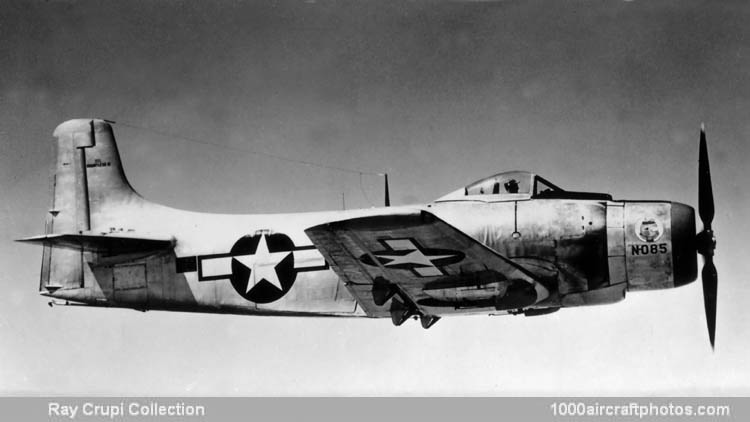08/31/2010. Remarks by Johan Visschedijk: "Developed to a World War II specification for a carrier-based dive-bomber and torpedo-carrier, the first single-seater in this category, the Skyraider was too late for service in that conflict, but proved to be one of the most versatile air weapons available to the US forces in both the Korean War and the Vietnam War. Ordered by the USN on July 6, 1944, as the XBT2D-1, the Douglas design showed the influence of war-time experience which indicated that the ability to carry a large and varied load was of overriding importance.
Unlike the SBD Dauntless and other scout and torpedo-bombers, the XBT2D-1 was laid out as a single-seater, the weight saved being available for load carrying. Although the airframe was by no means small, it was designed around the big 2,500 hp Wright R-3350 Cyclone eighteen-cylinder air-cooled engine, no provision was made for internal weapon stowage; this again saved airframe weight and complexity and allowed ordnance loads of up to 8,000 lb (3,629 kg) to be carried on 15 external strong points under the wings and fuselage.
In all, four designs in this new single-seat category were ordered during 1944, one other (Martin XBTM-1) besides the Douglas project achieving production status as the AM-1 Mauler, but the XBT2D-1 was clearly the best of the competing projects. The initial Navy order was for 25 aircraft to production standards although bearing the X designation, and the name Destroyer II was used for a time (the Destroyer I having been the unsuccessful BTD-1).
On March 18, 1945, two weeks before US forces invaded Okinawa as they pushed the Japanese back across the Pacific, the XBT2D-1 made its first flight, and a month later the USN ordered 548 production examples to be designated AD-1 Skyraider in the then new 'attack' category. Acceptance of the XBT2D-1s by the USN began during 1945, and within a year carrier qualification tests on the USS Sicily were completed. The production contract was cut back to 277 after V-J Day and delivery of these began in December 1946.
Although production ended in February 1957, twelve years after the line was first established and 3,180 Skyraiders had been produced in seven basic and fourteen sub-versions, serious proposals were made as late as 1966 for the re-establishment of production in order to meet Vietnam needs. By that time the Skyraider had become widely known as the Spad, a name which reflected the affection in which it was held by its pilots who likened its reliability and versatility to the famed World War I fighter."
